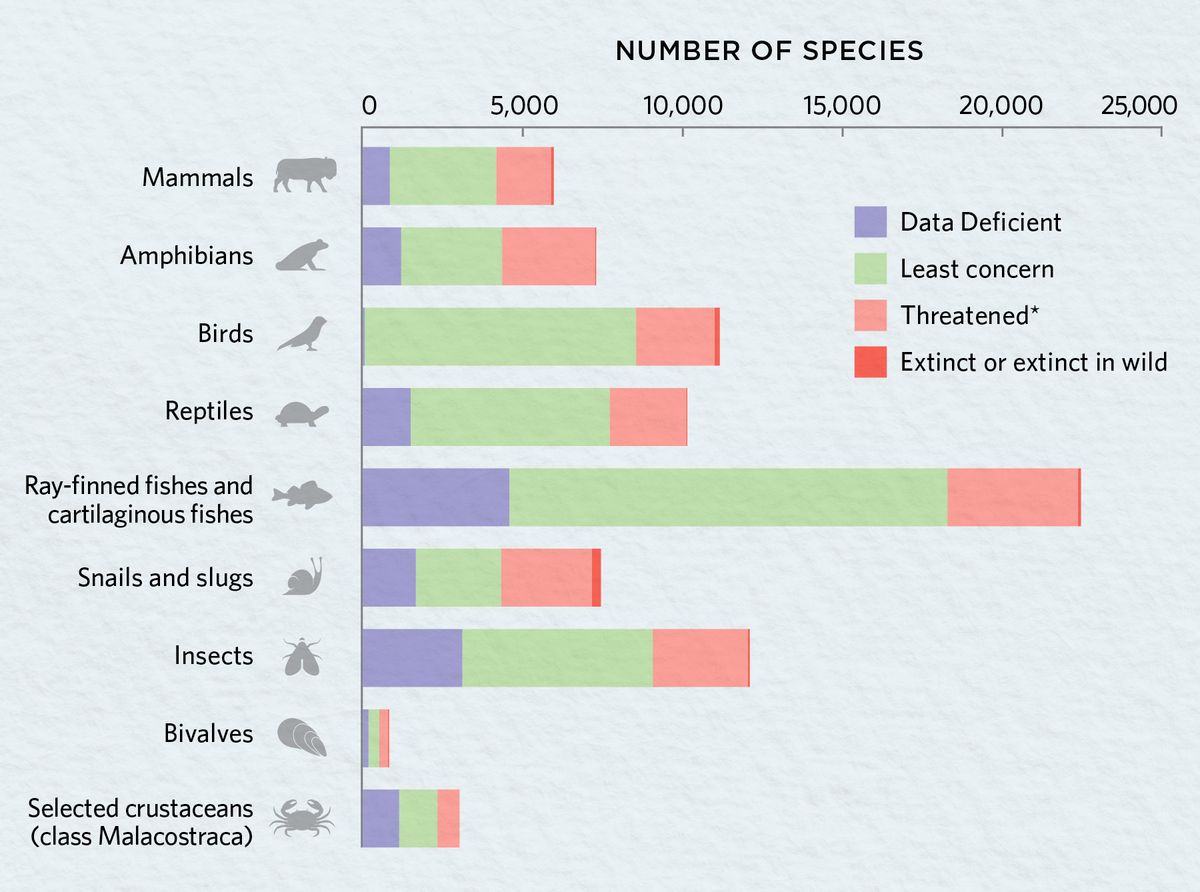ABOVE: © LAURIE O’KEEFE
Most scientists agree that five events in Earth’s history qualify as “mass extinctions”—defined as events where more than three-quarters of estimated species are wiped out. These ordeals were caused by natural phenomena, typically involving climatic changes, although the exact processes involved and the chain of events are often debated. Current trends suggest we’re now in another extinction crisis, although it’s unclear if whether that amounts to a sixth mass extinction.

 | Ordovician-SilurianThe Ordovician-Silurian mass extinction event may have wiped out some 85 percent of species, including many of the invertebrates this period is known for. Some scientists hypothesize the extinction crisis was driven by changes in ocean chemistry or a cooling climate that caused sea levels to drop as glaciers formed. |
 | Late DevonianThe late Devonian period was characterized by many environmental changes, although it’s not clear what caused an estimated 70 to 80 percent drop in species numbers. Some scientists don’t consider this event a mass extinction event based on analyses suggesting the biodiversity trend was driven more by a decrease in speciation rates than by an increase in extinction rates. |
 | Permian-TriassicCommonly referred to as the “Great Dying,” this extinction event is estimated to have wiped out more than 95 percent of marine species, as well as some terrestrial amphibians and reptiles. Many scientists think a key culprit was widespread volcanic activity. |
 | Triassic-JurassicGlobal warming triggered by heavy volcanic activity is hypothesized by some scientists to have caused the end-Triassic extinction event that obliterated up to 80 percent of Earth’s species. These included many ammonites and land-dwelling crocodile relatives. |
 | Cretaceous-PaleogeneThe most famous and well-studied of mass extinction events, the so-called K-Pg extinction killed off the nonavian dinosaurs after an asteroid collided with Earth. Some researchers believe the crisis was exacerbated by heavy volcanic activity in what is now India. |
 | Today’s crisisHuman activity—causing land use change, global warming, and pollution—are driving heightened extinction rates and population declines across many taxa. Some scientists argue we’re currently facing a sixth mass extinction, but others say it’s too early to make that call. |
UNDERSTANDING TODAY’S CRISIS
Estimates for extinction rates today are often based on data from the International Union for Conservation of Nature’s (IUCN) Red List, which compiles the conservation status of threatened species. Yet the organization has assessed only a fraction of known species—themselves only a fraction of the total number of species on Earth. And even among assessed species (data shown below), many are considered data-deficient.

*Includes species classified as critically endangered, endangered, and vulnerable, as well as those that are conservation dependent or near threatened
Read the full story.








